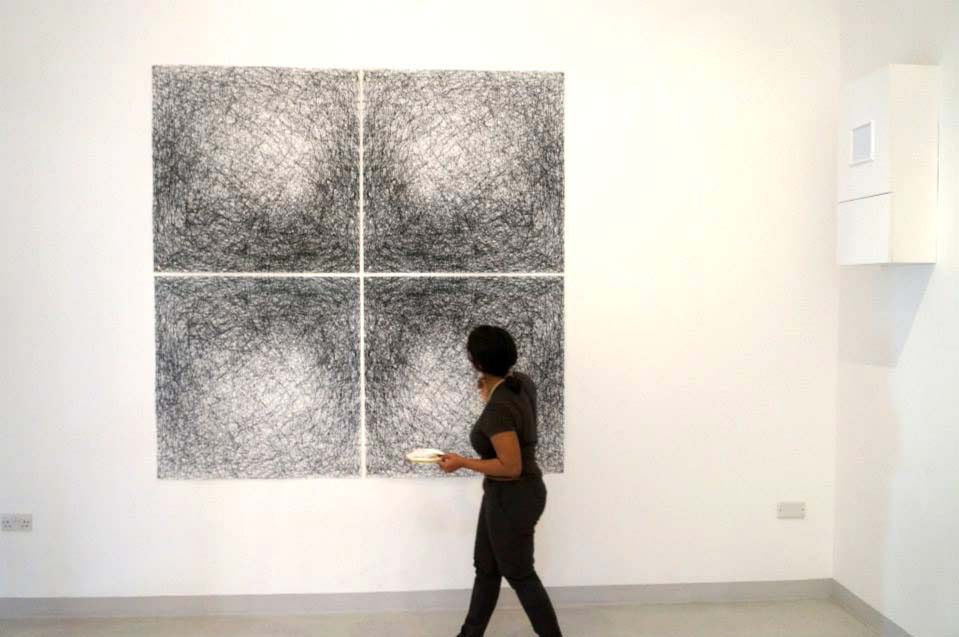
After three years of working with the local art community, the Katara Art Center (KAC) will close at the end of this month, management has announced.
In an email sent to supporters over the weekend, KAC’s artistic director and curator Mayssa Fattouh cited “lack of financial support and reallocation of space” as reasons for the abrupt move.
The half dozen staff members were told of the closure last week by their founder and managing director, prominent businessman Tariq Al Jaidah, and have been given until June 30 to vacate the space.
Since 2011, KAC provided a platform for contemporary art in Qatar, and aimed to promote young and emerging local artists. It providing a space for workshops, talks and programs and has so far worked with over 60 regional and local artists.
But in 2012, the center rebranded itself from a commercial to a social enterprise. Because they were not generating revenue, the investor working with Al Jaidah has now decided to pull its funding, center employees explained. They added that the investor could not be named because of a confidentiality clause in their agreement.
Shock decision
For many working at KAC, news of the closure came as a shock.
Speaking to Doha News, Fattouh said:
“We’re still baffled. We still can’t understand how something like this could happen when there is so much money spent on other things. There is a need for spaces like this to exist in Qatar. Everyone is extremely saddened….it feels very disenchanting.”
Karim Sultan, communications coordinator at KAC, echoed the sentiment, saying:
“We’re quite devastated. It was the beginning of a new chapter. We had two years of experimenting, and just as we had found our fitting and put together a team that gelled together, it’s now over.”
According to Fattouh, KAC’s annual budget is QR1 million. But the center has also been operating rent-free at Katara since its inception. “We were registered as a commercial entity and weren’t financially viable anymore. It has been intimated that we were asked to relocate to make way for a more commercial project,” she said.
The big picture
In recent months, art and culture have taken a bit of a hit in Qatar. The state-backed Qatar Museums Authority recently told employees to expect “a review of duplication,” prompting fears of significant job losses at the organization.
The news comes months after the Doha Film Institute, which also falls under the patronage of QMA chairperson Sheikha Al Mayassa Al Thani, laid off nearly one-third of its staff.
However, before this recent turn of events, Qatar had been ramping up its art spending over the last few years. Critics charge that most of the funding has been directed toward courting international artists, rather than local ones.
According to the New York Times, the recently unveiled Damien Hirst “Miraculous Journey” installation outside the under-construction Sidra Medical & Research Center, featuring bronze fetuses in various stages of gestation, cost over US $20 million.
And in 2011, Qatar paid the highest price ever recorded for a work of art – $250 million for Cézanne’s The Card Players, following Qatar’s $142 million procurement of Francis Bacon’s Three Studies of Lucian Freud.
The country has also hosted renowned international artists like Richard Serra, Damien Hirst, Cai Gio-Qiang, and Takashi Murakami. Supporters argue that bringing in big name artists spurs cultural conversations – and indeed, last year’s controversial Hirst exhibition received over 60,000 visitors in its opening month alone.
Speaking about Qatar’s art scene in 2012, the NYT concluded:
“Qatar’s royal family is making Doha, the country’s capital, into an international art hub for renowned artists from all over the world as it sets the stage for the World Cup in 2022, but local artists are being weeded out in the process…
(But the art scene is an empty golden shell”…“It glitters from the outside, but from the inside, it is empty.”
Meanwhile, local artists say they continue to struggle. According to Fattouh:
“There is a lack of groundwork. There is an extremely large vision that speaks globally, but doesn’t reflect what’s happening on the ground, and neglects local talent. It’s taken for granted. We were taken for granted.”
What’s next?
Anticipating a budget cut, KAC had been working with an independent company to secure the necessary funds to keep the center running.
However, the center had been relying on being able to continue operating rent-free out of Katara, which is now no longer an option.
Finding a new space and new source of funding is proving tough. According to Sultan, companies prefer to partner with major corporations with greater visibility, rather than with grassroots social enterprises desperately in need of money.
KAC will hold a final community event on June 15 before determining its next steps.
“It’s a question mark as to what happens next. It all depends on the community. If they will support a space like this, then we can make it. If not, then I have no idea,” Fattouh said.
Thoughts?








